St David’s Day Greetings
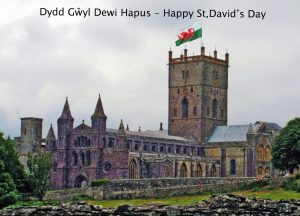
St David’s Cathedral
IMAGE BY MIKE DAVIES (RDN PHOTOGRAPHER)

St David’s Cathedral
IMAGE BY MIKE DAVIES (RDN PHOTOGRAPHER)
Sardis are holding an ALPHA course in Sardis Community Hall (opposite the park), starting on Wednesday March the 4th.
The course will run for 11 weeks every Wednesday at 7 p.m.
“Life is worth exploring” –the Alpha course will help us learn more about the Christian faith, God and life.
The course is free. If interested call/text Joyce on 07577653351
email: l&jlambert@hotmail.co.uk
Recently read an article by Gareth Evans together with pics of old players from Resolven past teams.I played for the Welfare B Team in the mid 50’s with the occasional game for the A Team who were then an established team in the first/premier division.HM Armed Forces curtailed my interests at this time.In 1962 I was contacted by Renison Edwards and Len “Dog”Jones who wanted to enter a YMCA Team in the Swansea and District Table Tennis League.Sadly both Rennison and Len have passed on.I think we ended the season mid table but seemed to have aroused interest from other members.The following season we entered B and C Teams and persuaded Dennis Bailey and Ken Lewis out of retirement to give support.The B Team consisting of Conway Rogers,Idris James,Kerry Guard and myself.Much the older man as I don’t think Idris and Kerry were in their teens but both represented Swansea Juniors that season including a trip to Ireland.We had a successful season winning our league with a 100% record.Kerry,Idris and Conway finished 1st,2nd and 3rd in the final league averages with myself squeezing at 10th.I could find my trophy,I would confirm the year and league.Resolven,as Gareth stated,has a long table tennis tradition.
PETER GUARD
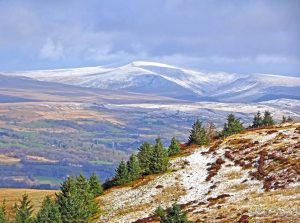
Stunning picture taken from Craig y Llyn by RDN photographer MIKE DAVIES
These images were taken in the morning after the flood showing the power of nature, the Aberdulais golf club under water and has lost everything,
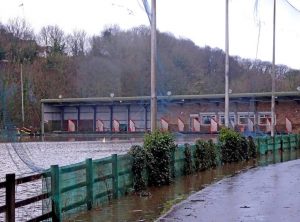
Large trees and debris piling up on the river bridge, and the powerful wind and rain threw a tree through the bridge railings.
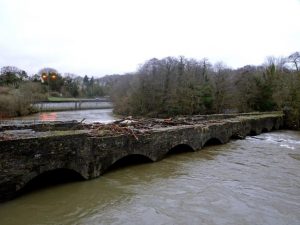
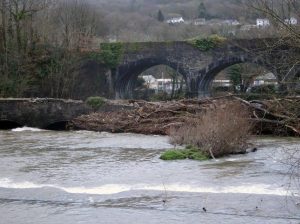
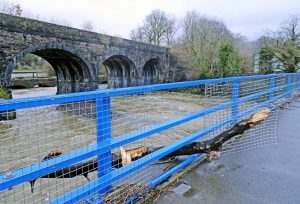
photos and report by MikeDavies
Many towns and villages throughout South Wales have suffered severe flooding during Saturday evening with a large number of people having to be evacuated from their homes. These images were taken at Aberdulais where the Dulais and Neath rivers meet.
Mike Davies
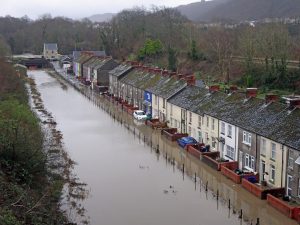
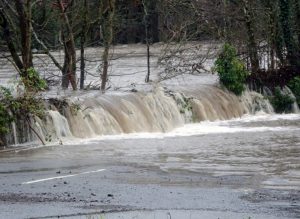
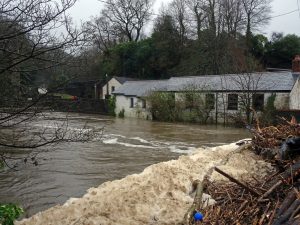
Notes of the Meeting of the Resolven History Society held on 10 February 2020
Cathy Graham, Secretary, welcomed Mr Steve David on behalf of the members, who had braved the blustery weather in the aftermath of Storm Ciara to hear a talk about the Bute family.
Mr David started by asking the question how a family from the west of Scotland came to own Cardiff Castle and huge estates in South Wales. Coats of arms in Cardiff Castle point to the history of the Stuart family of Bute, who were related to the Stuart kings of Scotland. The link to Wales came about through the marriage in 1766 of John, Lord Mountstuart to Charlotte Windsor, heiress of Herbert, Lord Windsor. The Herberts, as descendants of the Earls of Pembroke, held huge estates across South Wales and were the fourth richest family in the country. In lieu of a dowry, Charlotte’s father gave land which ran from Cardiff Bay to Hirwain Common, a vast acreage but not considered very good land. Lord Mountstuart’s second marriage to a daughter of the Coutts family brought additional wealth. In 1796 Lord Mountstuart was created the first Marquis of Bute. At the time when the iron industry was developing, the Butes held the majority of land where the ironworks were being built, but this was not generating good returns. The rent charged to Crawshay for the land where he had his works was £38 per year. In 1802 Crawshay had personal fortune of £8 million, whereas the Mountstuarts were struggling to support their lifestyle. In 1806 a report shows that Cardiff had no real export trade and was a poor port. No coal was exported because there was no way of transporting it from the interior. The first Marquis of Bute died in 1814 and he was succeeded by his grandson, John, the second Marquis. At this time the greatest concentration of ironworks and investment in the manufactories in the world was in south Wales. In order to move coal and iron to the coast it was necessary to cross the Marquis of Bute’s land. Bute then capitalised by renegotiating the leases of the Iron Masters and built both the Glamorgan canal and the Taff Vale Railway. By also developed the port of Cardiff by building the Bute and Charlotte Docks. Cardiff then became one of the most modern towns of the time. The railways changed the fortunes of the Butes and by 1849 he accrued an income of £38000 per year from his estates.
In 1843 the Royal Navy was looking for fuel for its steamships. They had had a contract with Durham for coal since the 1820s. Following a race between two ships, it was found that Welsh coal gave a better performance. The Admiralty issued an exclusive contract to buy coal from Bute and his income increased to £96000 per year. The second Marquis built terraces of houses and leased out the whole of Cardiff. His railway company, the Taff Vale Railway Company was the most profitable in the world. He died in 1848 leaving a six month old son and the huge estate was administered on his behalf by trustees until he reached the age of 21. Remarkably, the Bute estate now owned 3/5 of the land in both the Rhondda and Cynon valleys. In 1851 Walter Coffey, a mineral surveyor, discovered the Rhondda main seam of steam coal and initially the coal mined was at Treherbert. The Butes were not involved in sinking the mines or extracting the coal. Instead, wisely, they settled on received royalties, set at 5 shillings per ton, plus wayleave charges for transporting the coal across their land, transporting it via their railway system and levying taxes on its shipping from Cardiff. In the first three years this amounted to an average of 186000 tons. Incredibly, on the outbreak of Great War this had reached 2.7 million tons of steam coal which was used in every corner of the British Empire.
By the time the third Marquis reached the age of 21 in 1869 and came into his inheritance he was said to be the richest man in the world. In addition to his assets in Cardiff, including shops, pubs and houses, he owned 28000 houses in Rhondda Fawr which were leased out. A scholarly man, he had very little interest in the modern world and had never had to think about how to increase his wealth. At a time of significant change in Wales, he retreated into the past. In the grounds of Cardiff Castle he demolished the Georgian mansion built by his father and commissioned William Burgess to build him a medieval fantasy castle. Cardiff Castle was the first house to have electricity and inside toilets. He built Castle Mount Stewart House in Ayrshire for £600000. Castell Coach was built as a present for his bride on their honeymoon, but he never actually stayed there. He owned 7/8 of the land that Cardiff was built on and became its first Mayor when it was made a city. His unworldliness is exhibited in the fact that when Cardiff City Council wanted to enlarge the docks in the 1890s he turned them down .On his death in 1900,his two daughters were given £150000 each plus dowries of £25000. The remainder of the estate was divided between his three sons. The subsequent , 4th Marquis was not interested in commerce and It was his brother, Ninian, who took the reins and it was he who became the first sponsor of Cardiff City and its eponymous ground. He unfortunately died during World War One.
Even during the depression of the 1930s the income of the Bute family was still £96000 per annum. During this time most of the houses in the Rhondda had been sold off along with the land to the coal companies. A short time after this, the land on which that the site of Cardiff was built was sold to the Council for £24.5m which unsurprisingly took until 1969 to pay off the debt .Once the core of the Cardiff estate was sold, interest in the other elements began to ebb. In 1946, the last vestiges of the Taff Vale railway and Cardiff Docks were also sold. Following the death of the 4th Marquis in 1947 the remaining parts of the Welsh estate were donated including Cardiff Castle, which was donated to the to the City of Cardiff. In their usual crafty way, a subsequent codicil in the will meant that the family would be exempt of any death duties. This symbolically ended the Bute family’s involvement in business which had made them the richest people in Britain. Although they were seen as poor landlords in times of hardship by their tenants ,the Bute family had been an essential element in the economic development of south east Wales and their epitaphs are writ large in Cardiff Castle, Castell Coch and of course Cardiff Bay.
Cathy Graham thanked Mr David for an extremely interesting talk.
Report by Cathy Graham.
~ ~ ~
I came by a negative in my files and converted it to a B&W image
but who are these men in Rheola Aluminium, I would think it was around the late 50’s.or early 60.s
can any of our readers put a name to them?
Mike Davies
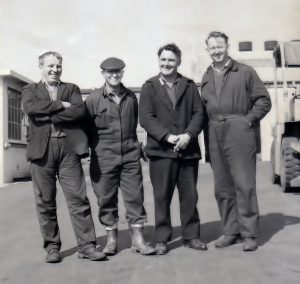

MIKE DAVIES
Resolven Ladies Bowls Club were delighted to wine and dine one of their members this week, to celebrate her 70th birthday. Ann Evans (still known as Ann Morgan, daughter of headmaster Reg by many people locally) became 70 in December, but missed a meal wth her team mates through illness.She made up for it by being the “star of the show” this week lighting up the room like the birthday cake candles !
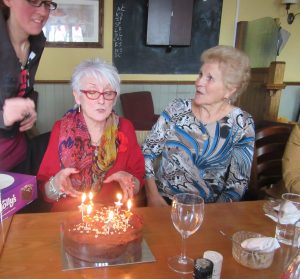
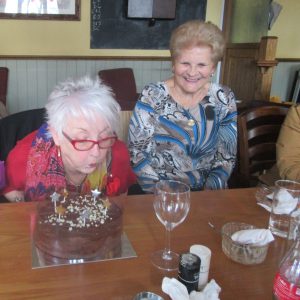
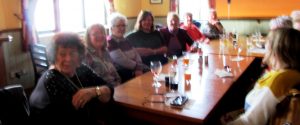
A grand time was had by all!

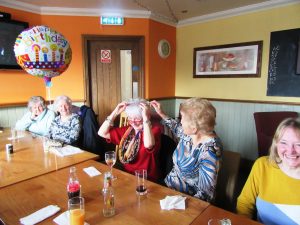
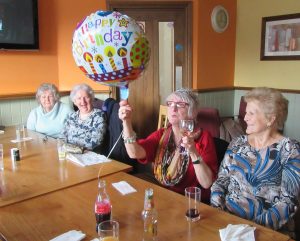
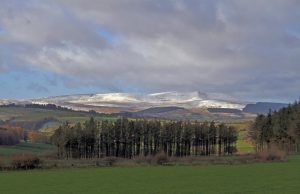
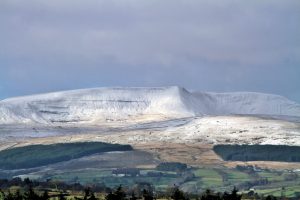
Winter arrived on the Brecon Beacons 11/02/2020 with it’s caps of snow
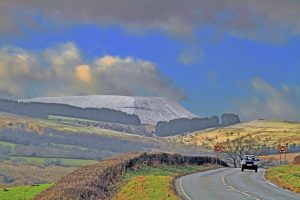
I was given a few negatives by a friend as he had no need for them and did not know what was on them.
I scanned the negatives and was delighted to see these photos- a nostalgic glimpse of early years on Rheola Estate.






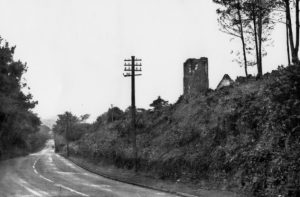


MIKE DAVIES
